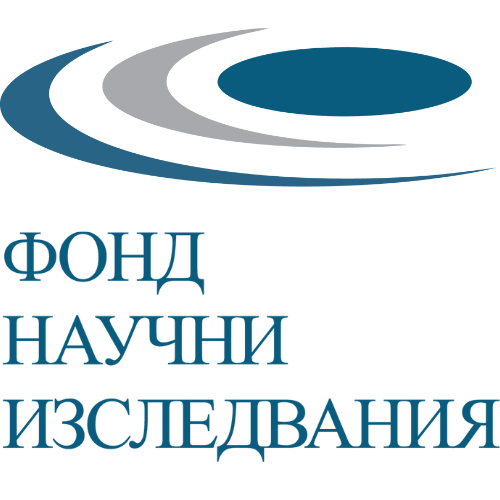INNOVATIONS IN STROKE REHABILITATION
DOI:
https://doi.org/10.15547/tjs.2025.s.01.011Keywords:
stroke, innovations, robotic rehabilitation, virtual reality, telerehabilitationAbstract
Stroke rehabilitation requires a personalized and multidisciplinary approach. Stroke remains a leading cause of disability, and innovative technologies such as robotics, virtual reality, and telerehabilitation show significant potential for improving patients' motor and cognitive functions. Robotic systems provide precise, repetitive movements, while virtual reality enhances motivation through engaging and realistic environments. The combination of technologies creates a synergistic effect and leads to higher efficiency. Telerehabilitation and brain-computer interface (BCI) robots expand access to therapy and allow recovery even in severe cases. Objective: This article aims to analyze the role and effectiveness of these innovations in the context of modern post-stroke rehabilitation. Materials and Methods:
A review of recent literature was conducted, including scientific publications related to the rehabilitation of ischemic or hemorrhagic stroke and the use of innovative technologies. Conclusion: Robotic systems, virtual reality, telerehabilitation, and BCI robots complement traditional therapies and offer new approaches to overcoming long-term disability. Clinical evidence shows significant benefits from their use, especially in the early phases after stroke.
References
Pavlova, I., Petrova, N., & Vasileva-Decheva, D. Kinesiotherapy in ischemic stroke in the primary recovery period. Scientific Papers of the University of Ruse, 54, 50, 2015.
Petrova, N., Rumenova, A., & Sabef, N. Brain stroke - social significance, treatment, and effective prevention. Scientific papers of Ruse University, 53(8.3), 179-83, 2014.
Lubenova, Daniela and Titianova, Ekaterina and Vasileva, Dance (2021) Principles of neurorehabilitation in stroke. In: Textbook of Nervous Diseases - Clinical Neurology. KOTI EOOD, Sofia, pp. 93-107. ISBN 978-619-90419-7-0, 2021.
Rajashekar, D.; Boyer, A.; Kaiser, K. A. L.; Dukelow, S. P. Technological Advances in Stroke Rehabilitation: Robotics and Virtual Reality. Phys. Med. Rehabil. Clin. N. Am., 35(2), 383–398. https://doi.org/10.1016/j.pmr.2023.06.026, 2024.
Macaluso, R.; Giffhorn, M.; Prokup, S.; Cleland, B.; Lee, J.; Lim, B.; Jayaraman, A. Safety & Efficacy of a Robotic Hip Exoskeleton on Outpatient Stroke Rehabilitation. J. Neuroeng. Rehabil, 21(1), 127, 2024.
Park, S.; Fraser, M.; Weber, L. M. et al. User Driven Functional Movement Training with a Wearable Hand Robot after Stroke. arXiv, arXiv:1911.08003, 2019.
Bratanov D. ROBOTIZED THERAPY. University Publishing Center at Rusen University "Angel Kanchev", MEDIATEH - Pleven, p. 231, ISBN 978-619-207-062-5, 2016.
Laver, K. E.; Lange, B.; George, S. et al. Virtual Reality for Stroke Rehabilitation. Cochrane Database Syst. Rev., 11, CD008349, 2017.
Saleh, S.; Smith, M.; Jones, D. et al. Exploring the Efficacy of Virtual Reality–Based Rehabilitation in Stroke. J. NeuroEng. Rehabil., [no vol., no pages]. PMC10836287, 2024.
Wang, S.; Meng, H.; Zhang, Y.; Mao, J.; Zhang, C.; Qian, C.; Guo, L. Effect of Virtual Reality–Based Rehabilitation on Mental Health and Quality of Life of Stroke Patients: A Systematic Review and Meta-Analysis of Randomized Controlled Trials. Arch. Phys. Med. Rehabil., 106(4), 607–617, 2025.
Alashram, A. R. Combined Robot-Assisted Therapy Virtual Reality for Upper Limb Rehabilitation in Stroke Survivors: A Systematic Review of Randomized Controlled Trials. Neurol. Sci., 1–15, 2024.
Chheang, V.; Lokesh, R.; Chaudhari, A. et al. Immersive Virtual Reality and Robotics for Upper Extremity Rehabilitation. arXiv:2304.11110, 2023.
Lee, M. H.; Siewiorek, D. P.; Smailagic, A. et al. Design, Development, and Evaluation of an Interactive Personalized Social Robot to Monitor and Coach Post Stroke Rehabilitation Exercises. arXiv:2305.07632, 2023.
Rodrigues, P.; Quaresma, C.; Costa, M.; Luz, F.; Fonseca, M. M. Virtual Reality–Based Telerehabilitation for Upper Limb Recovery Post Stroke: A Systematic Review of Design Principles, Monitoring, Safety, and Engagement Strategies. arXiv:2501.06899, 2025.
Hao, J.; Crum, G.; Siu, K. C. Effects of Virtual Reality on Stroke Rehabilitation: An Umbrella Review of Systematic Reviews. Health Sci. Rep., 7(9), e70082, 2024.
Liu, J.; Li, Y.; Zhao, D.; Zhong, L.; Wang, Y.; Hao, M.; Ma, J. Efficacy and Safety of Brain–Computer Interface for Stroke Rehabilitation: An Overview of Systematic Review. Front. Hum. Neurosci., 19, 1525293, 2025.

Downloads
Published
Issue
Section
License

This work is licensed under a Creative Commons Attribution-NonCommercial 4.0 International License.


